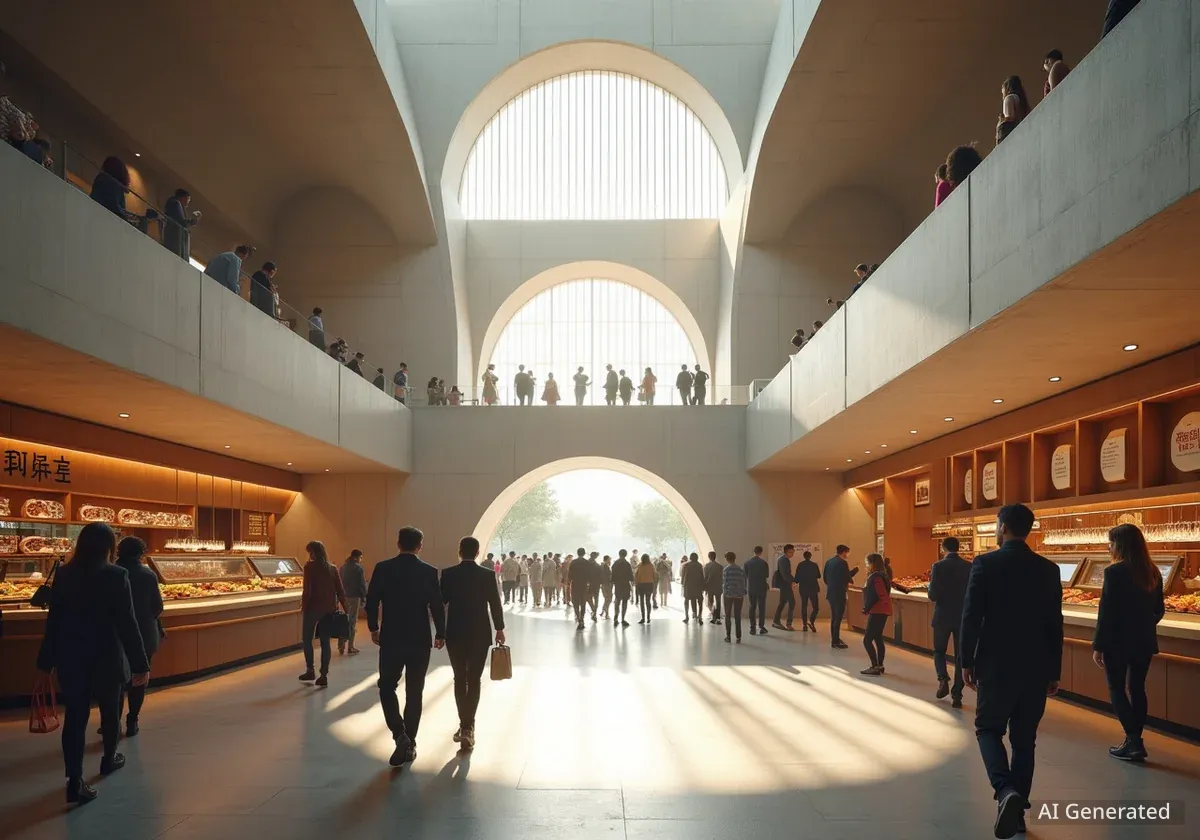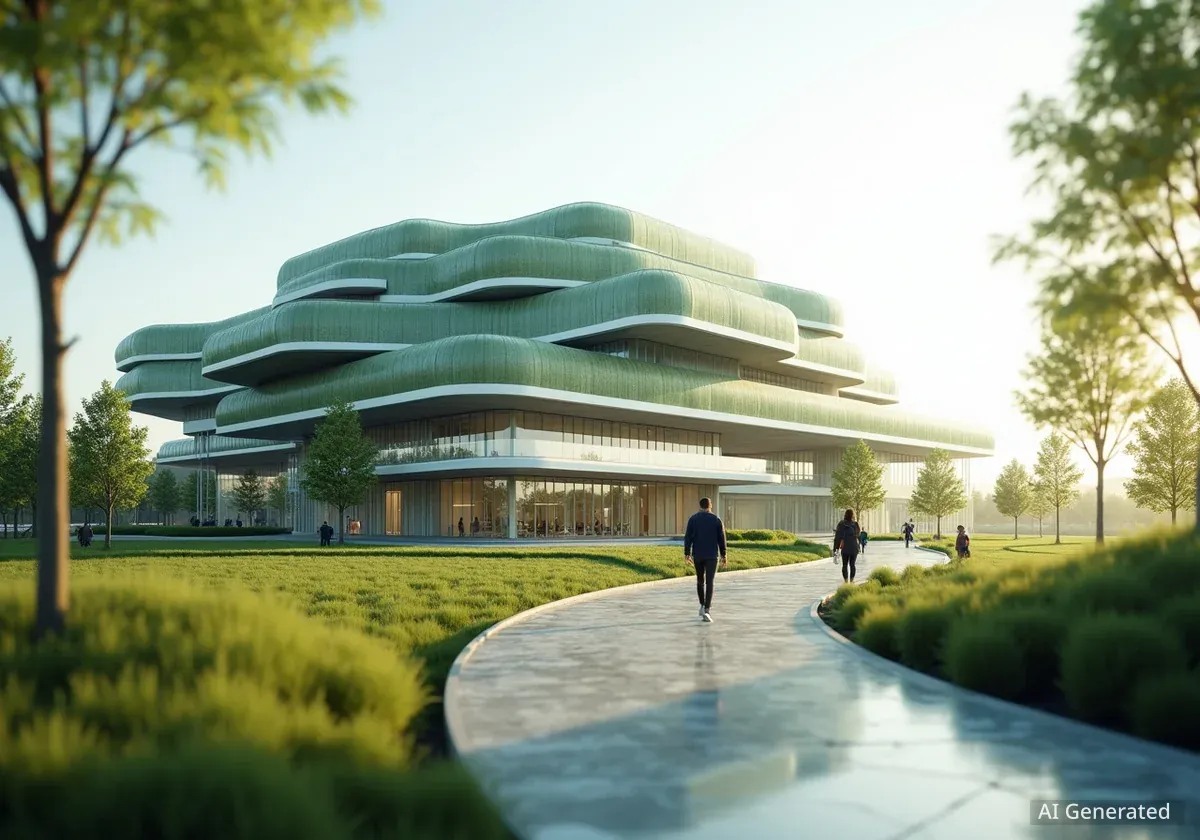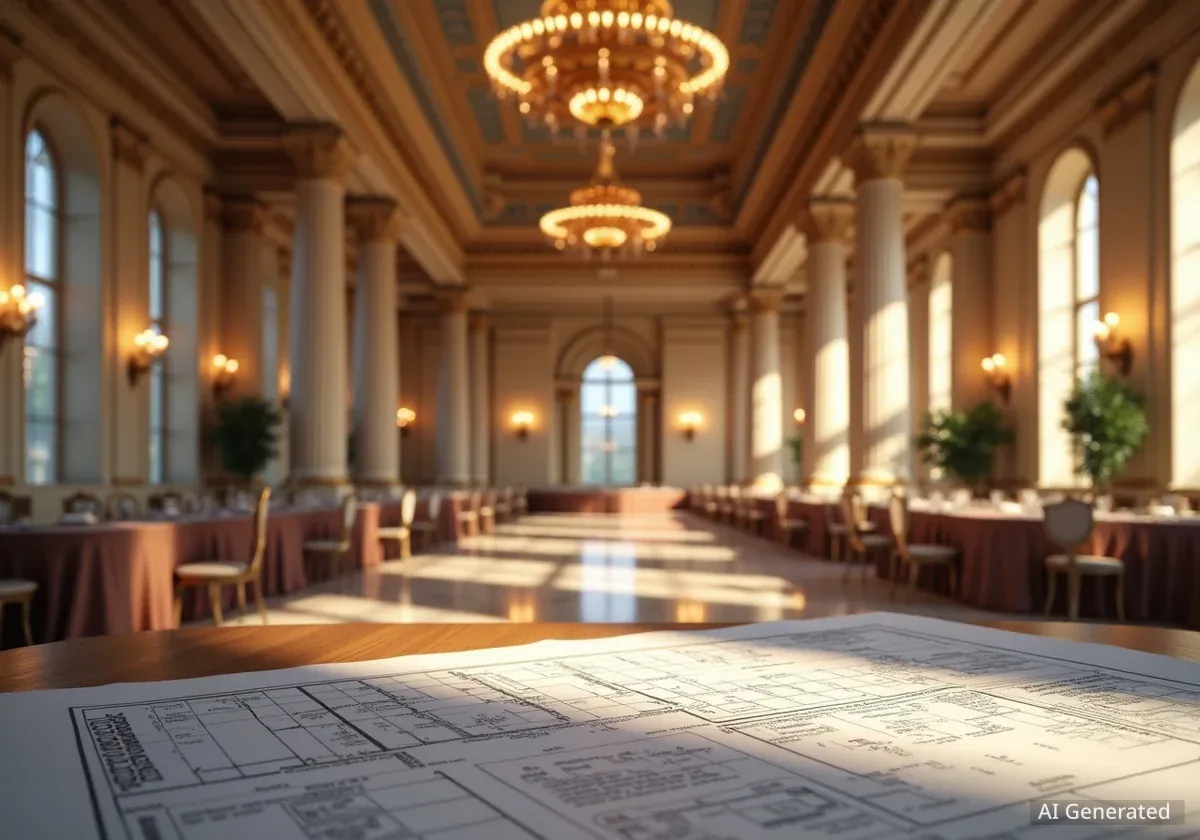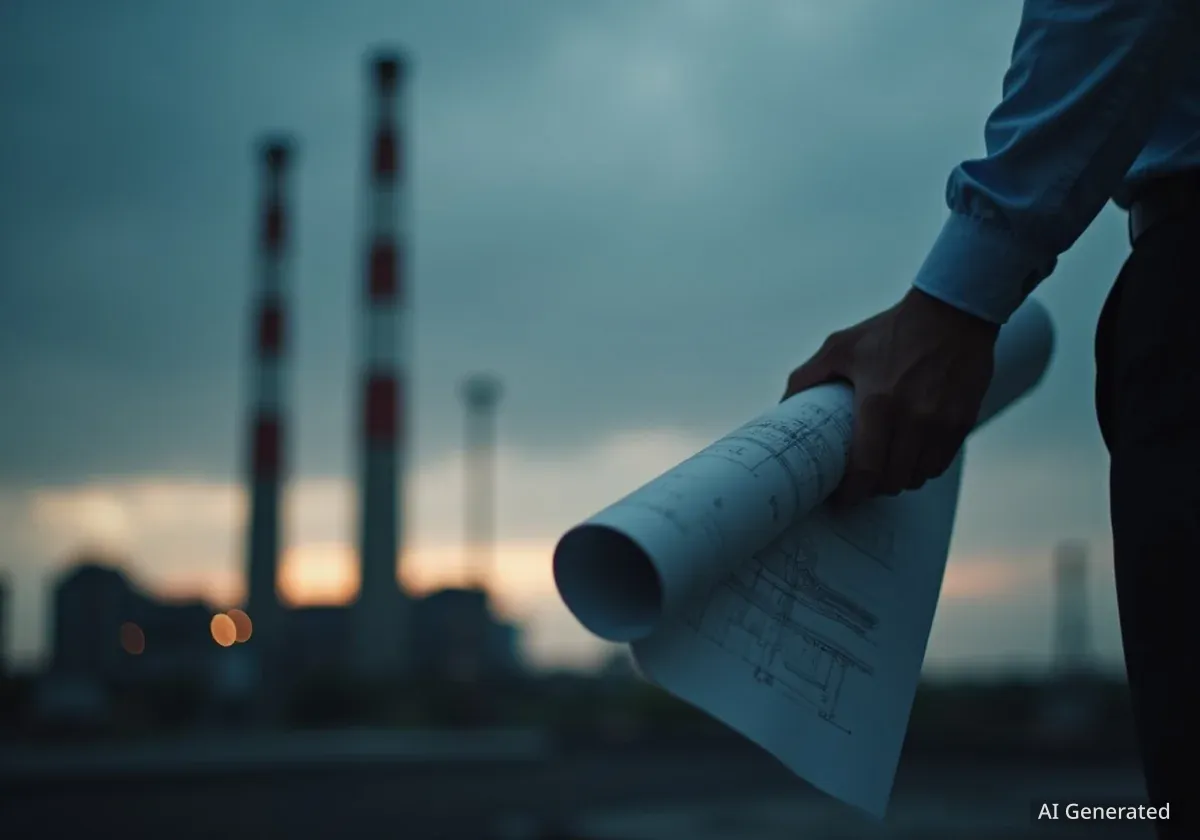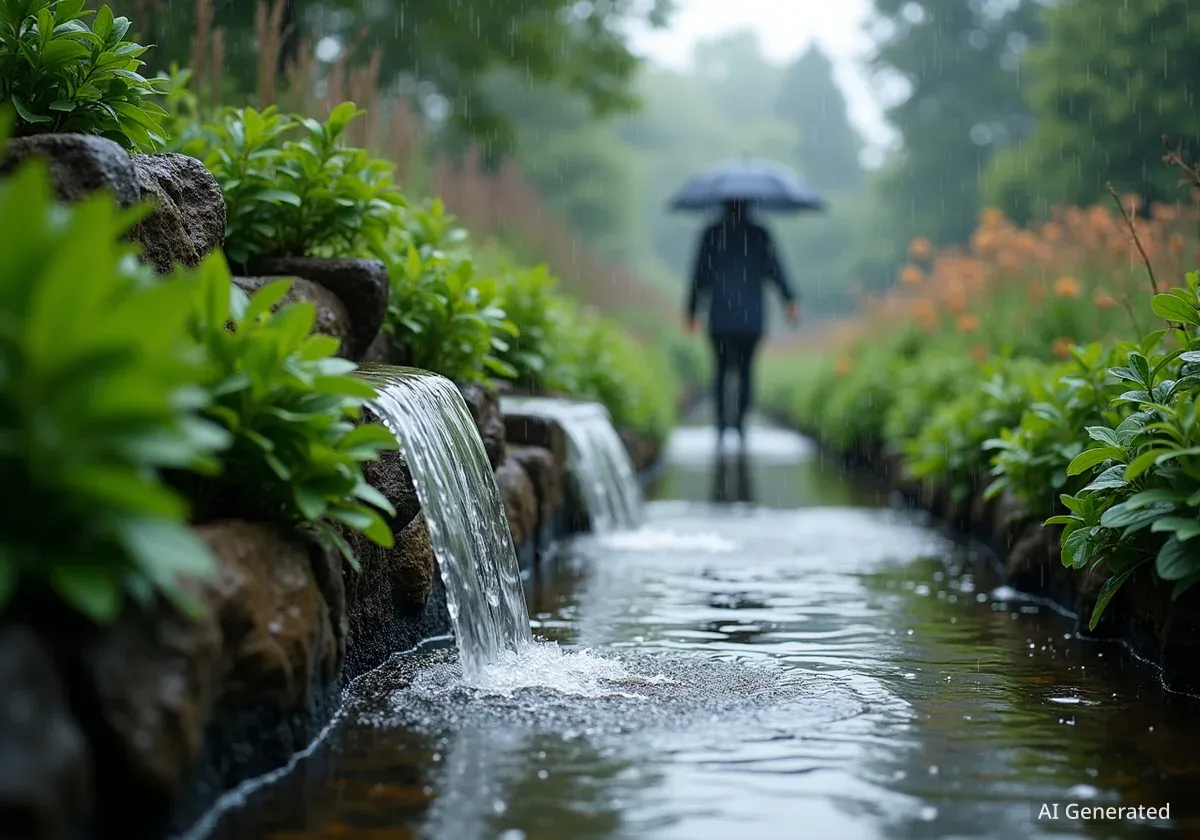A proposal to transform Kenzo Tange's disused Kagawa Prefectural Gymnasium into a civic hub has won the Radical Renewal Competition. Designer Ethan Akiyama Poh’s concept, named 'New Ground,' aims to save the post-war structure from demolition by reimagining it as a vibrant food hall and office complex, celebrating local produce and creating long-term value for the city of Takamatsu, Japan.
Key Takeaways
- Ethan Akiyama Poh's 'New Ground' proposal won the Radical Renewal Competition.
- The plan revives Kenzo Tange's Kagawa Prefectural Gymnasium in Takamatsu.
- The gymnasium will become a food hall, offices, and public spaces.
- The design draws on Tange's Metabolist principles, connecting the building to its urban context.
- The project highlights adaptive reuse for historic buildings facing demolition.
Reimagining a Post-War Landmark
The Kagawa Prefectural Gymnasium, designed by Pritzker Architecture Prize-winning architect Kenzo Tange, has been vacant for years. It faces demolition due to seismic safety concerns and functional limitations for modern sports. Ethan Akiyama Poh's 'New Ground' offers a solution. It preserves the iconic building by giving it new purpose within Takamatsu.
The winning proposal envisions the gymnasium as a dynamic center. It will feature a food hall showcasing products from the Seto Inland Sea. Surrounding offices and public areas will also contribute to the city's economic and cultural life. This approach seeks to make the building a regional landmark once again.
Architectural Significance
Kenzo Tange also designed the Yoyogi National Gymnasium in Tokyo. Both gymnasiums share a similar design. However, their fates differ greatly. Yoyogi was renovated for the 2020 Tokyo Olympics, becoming a national symbol. The Kagawa Prefectural Gymnasium, its regional counterpart, remained unused.
Metabolist Principles in Modern Design
Akiyama Poh's design draws inspiration from Tange's use of Metabolist principles. Metabolism was a Japanese post-war architectural movement. It explored the idea of buildings evolving like living organisms and envisioned architectural megastructures. The 'New Ground' proposal echoes this by creating a new structural grid from the gymnasium's existing framework.
This new grid forms a unifying field. It bridges roads and connects to nearby structures. This integration embeds the gymnasium more firmly within its urban surroundings. The design strategy positions the building not just as a preserved relic but as an active, evolving part of the city.
"This project beautifully considers how this iconic Kenzo Tange structure can be reimagined and revived for 21st-century uses," said Max Fraser, editorial director at Dezeen. "The world is full of buildings, including this one, that were built to serve the needs of their time but then fall out of favor."
Connecting Past and Present
Tange's connection to Kagawa Prefecture dates back to 1958. He designed the governmental office building there, which became a prototype for democratic public architecture in Japan. That building is still in use today. Six years later, Tange designed the Kagawa Prefectural Gymnasium, alongside the Yoyogi National Gymnasium.
The contrasting outcomes of these two gymnasiums highlight a critical issue. Many significant structures from the past face an uncertain future. Adaptive reuse, like the 'New Ground' proposal, offers a sustainable path forward. It respects historical value while addressing modern needs.
The Radical Renewal Competition
The Radical Renewal Competition was organized by Dezeen and Bentley. It invited architects and designers to propose transformations for historically significant buildings. The goal was to rejuvenate these structures with forward-thinking designs while preserving their heritage. The competition received entries from over 27 countries globally.
Ethan Akiyama Poh's Vision: New Ground
Ethan Akiyama Poh, based in New York City, developed the 'New Ground' concept. He described the two gymnasiums as "twins, separated at birth." Both were designed by Tange but had different structural engineers. While Yoyogi became a national symbol, the Kagawa gymnasium sat empty.
Poh's project recontextualizes the Takamatsu gymnasium. It extends the existing service level around the building. This creates a new datum, a new understanding of the building's form. The gymnasium appears to float upon a new horizon, surrounded by programmatic islands within a field of structural members.
Structural and Economic Integration
Inside the gymnasium, the existing structural elements are exposed. Steel structures are inserted between columns and beams. These form stalls where local food and produce can be sold. The interior becomes the largest programmatic island, the origin of the field generated around it.
A new structural grid is derived from the gymnasium's original grid. This new grid uses a prefabricated CLT (Cross-Laminated Timber) framework. This allows for an ever-growing, expanding field around the gymnasium. The use of prefabricated elements ensures efficient and sustainable construction.
At the urban level, this field creates visual unity. It bridges over roads, relates to existing buildings, and connects the large concrete structure to its site. At the building scale, steel structures within the field create programmatic islands. These are definitive spaces, while the rest of the field remains flexible and open.
- Urban Scale: Unifies the gymnasium with its surroundings, bridging roads and connecting to existing structures.
- Building Scale: Creates distinct programmatic 'islands' within a flexible open plan.
- Human Scale: Forms gathering spaces, enclosed rooms, tables, and benches for public use.
Poh's design strategy also draws on Tange's Expo 70 ideas. It frames the gymnasium within an oculus. This approach situates the Tange building within its architectural history and urban context. The gymnasium is envisioned as both a visual and economic symbol for the region, attracting tourism and business.
The Importance of Adaptive Reuse
Dezeen's Max Fraser emphasized the duty to adapt existing structures. He highlighted the immense embodied carbon from their original construction. Demolition should be a last resort. Projects like 'New Ground' fully embrace these ideals by finding new uses for old buildings.
The competition's judges, including designers and journalists from Bentley and Dezeen, selected 'New Ground' as the overall winner. Ethan Akiyama Poh received a top prize of £15,000 for his innovative proposal. Raymond Lapiejko received £10,000 for his 'Hoosac Stores Recycling and Repair Center' concept, and Zixuan Luo received £5,000 for 'Between Skin and Bone'.
This project serves as a model for how to approach historic preservation in a modern world. It shows that iconic buildings can maintain their legacy while serving contemporary community needs. The Kagawa Prefectural Gymnasium, once facing an uncertain future, now has a path toward renewed significance.

